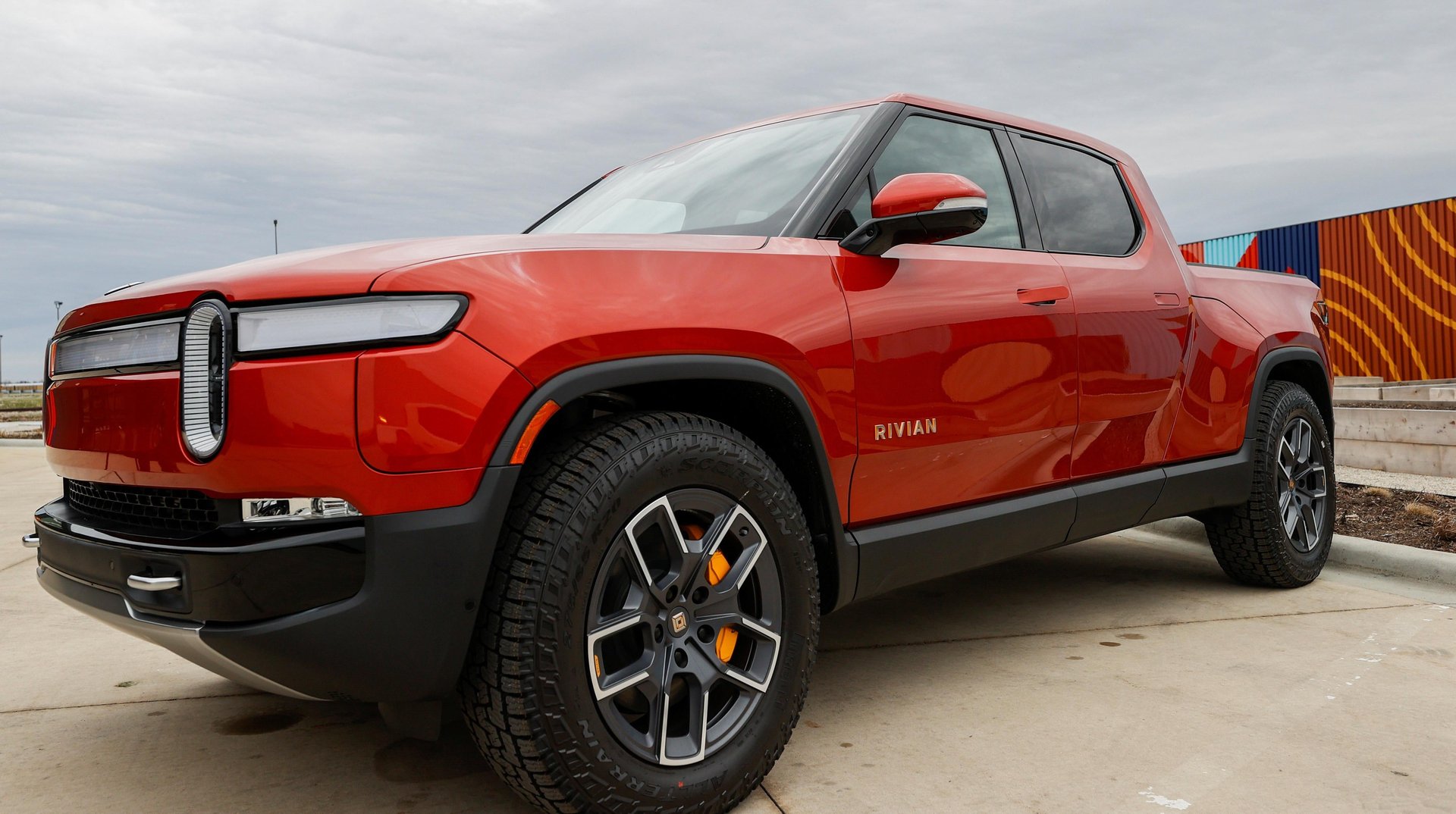Rivian's 15th year is starting just as poorly as Tesla's did
Fellow EV maker Tesla also experienced financial troubles during its teenage years

Electric truck maker Rivian’s shares fell as much as 11% on Tuesday (Jan. 2), after the company reported fewer-than-anticipated deliveries in the fourth quarter.
Suggested Reading
But Rivian’s rocky start to its 15th year is just as bad as competitor Tesla’s. That company is six years older than Rivian, but it managed to turn its troubled teenage years—which CEO Elon Musk said were mired in “extreme stress and pain”—into a mostly golden age of adulthood. Can Rivian do the same?
Related Content
Check out Quartz’s “Rivian versus Tesla” timeline and decide for yourself.
Year 1: Birth of the car makers
Tesla: The EV company is incorporated in 2003 by Silicon Valley engineers Martin Eberhard and Marc Tarpenning.
Rivian: The electric truck startup is launched in 2009, by engineer and MIT graduate RJ Scaringe, as Mainstream Motors.
Years 2-10: Childhood gains
Tesla: In year two, Eberhard and Ian Wright, Tesla’s third employee, pitch the company to Elon Musk—successfully. Musk leads the initial round of investment and becomes chairman.
In its third year, Tesla debuts two prototypes of its first vehicle, the Roadster, to 350 guests at Santa Monica Airport. They barely make it through the event.
“Those two cars were basically destroyed by the end of the night,” Tesla co-founder JB Straubel admitted to industry news outlet Electrek years later. “We actually had to drive them behind a curtain to pump ice water in parts of the powertrain in order to keep them from overheating for more test drives.”
The Tesla Roadster goes into production in 2008, when Musk takes over as CEO. Tesla launches an IPO at $17 per share in 2010, its seventh year, valuing the business at $1.7 billion—and making it the first auto company to go public in more than 50 years. Shares surge 41%, and Tesla raises $226 million in its first day on the stock market.
Rivian: The company opens research centers in Michigan and California in 2015, its sixth year. Two years later, Rivian buys a former Mitsubishi plant in Normal, Illinois. In 2018, Rivian debuts its first vehicles, a seven-passenger pickup truck (R1T) and a seven-seat SUV (R1S), at the LA Auto Show. The company raises $2.85 billion from investors, led by global asset manager T. Rowe Price, Amazon, and Ford, in 2019. Amazon orders 100,000 trucks from the automaker as it looks to reduce its carbon footprint.
Years 11-16: Teenage wasteland
Tesla: Tesla loses more than $4,000 for every vehicle it makes in 2015, its 12th year, and its cash consumption raises concerns for investors. In 2017, the company’s net loss surges to $2.2 billion, more than three times the prior year’s.
Elon Musk calls years 14 to 16 a period of “[p]roduction & logistics hell” for the company.
Rivian: At first, things are looking up for the electric truck manufacturer during its preteen years, when it raises an additional $7.7 billion from investors in 2020–21. In its 12th year (aka 2021), the company produces its first consumer-ready R1S and R1T vehicles, also becoming the first automaker to bring an electric pickup to market. Rivian goes public at $78 per share that November. Its stock price surges 30% on the first day of trading, making it the second-highest-valued US automotive company behind Tesla.
But the next year, feeling the curse of puberty, Rivian loses nearly $7 billion due to supply chain issues and macroeconomic forces, up from its losses of $4.7 billion in 2021 and $1 billion in 2020. The company says in a Securities and Exchange Commission filing that it doesn’t expect to become profitable in the foreseeable future.
In 2023, Rivian is said to lose $33,000 for every electric truck it sells. Nasdaq drops the company from its index.
Even though the EV startup beat its production goals—it made more than 57,000 vehicles, a huge jump from the previous year—its shares slide during the first day of trading in 2024. Rivian’s stock price is $20.86 at market open, about five times less than its value on the first day of trading in 2021. That’s because its fourth-quarter deliveries didn’t meet Wall Street’s expectations.
Years 17+: Adult insights
Tesla: The company turns profitable in its 17th year—2020—raking in $862 million. In 2022, its profits soar to $12.6 billion.
Despite facing headwinds due to a recall of over 2 million vehicles at the end of 2023, Tesla beats analyst forecasts by delivering a record number of vehicles. Its shares start 2024 at $246.76—almost 15 times their IPO price.
Rivian: The EV maker is only 14 going on 15, so there’s still time for the tide to turn as it did for Tesla. In fact, Electrek said Tuesday that despite its troubles, Rivian is “still on the right track.”
